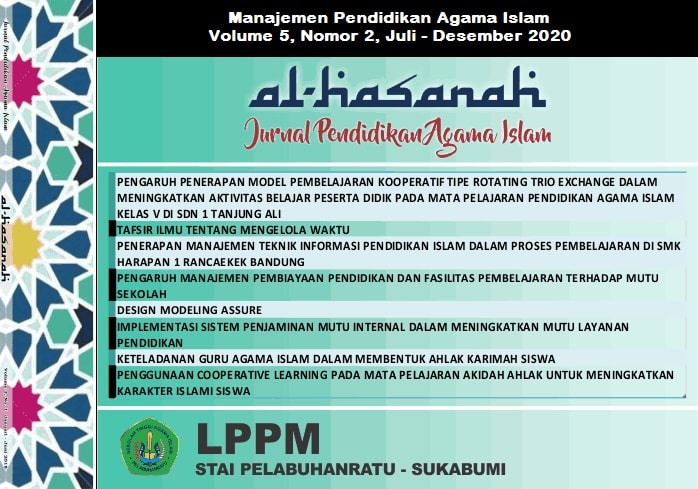IMPLEMENTATION OF INTERNAL QUALITY ASSURANCE SYSTEMS IN IMPROVING THE QUALITY OF EDUCATION SERVICES
Research at the SPMI Model School SD Darul Hikam 2 Bandung Regency and SDN 200 Leuwipanjang Bandung City
DOI:
https://doi.org/10.51729/5211Abstract
This research is motivated by the low quality of education in various education, so that the Quality of Internal Quality Assurance System of Education Services needs to be improved. The purpose of this study is to find out the standards, quality mapping, planning, implementation, evaluation, inhibiting strategy and supporting quality assurance in Darul Hikam 2 Elementary School and 200 Lew SDN in the city of Bandung. This study uses a qualitative approach with descriptive methods. as well as in-depth interviews and documentation. Data were analyzed through data reduction, data presentation, drawing conclusions, and testing the validity of the data by triangulation. The findings of this study that these two schools as a whole have implemented an internal quality assurance system in improving the quality of education services in their respective schools with good results because the lowest is in the range of 5.06 and that means including the category towards SNP 3 with 3 star acquisition .
Downloads

Downloads
Published
How to Cite
Issue
Section
License
Authors who publish with this journal agree to the following terms:
- Authors retain copyright and grant the journal right of first publication with the work simultaneously licensed under a Creative Commons Attribution 4.0 International License. that allows others to share the work with an acknowledgement of the work's authorship and initial publication in this journal.
- Authors are able to enter into separate, additional contractual arrangements for the non-exclusive distribution of the journal's published version of the work (e.g., post it to an institutional repository or publish it in a book), with an acknowledgement of its initial publication in this journal.
- Authors are permitted and encouraged to post their work online (e.g., in institutional repositories or on their website) prior to and during the submission process, as it can lead to productive exchanges, as well as earlier and greater citation of published work.
















